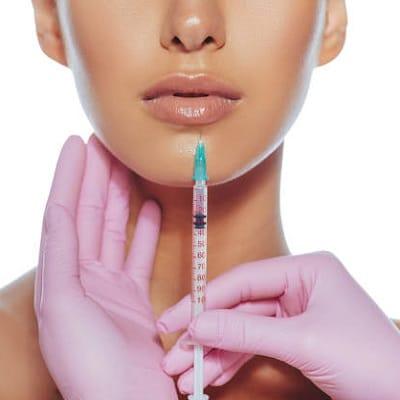Although hyperpigmentation is not dangerous, it may indicate other health issues. However, it is more common in women with hormone abnormalities related to progesterone and estrogen. Therefore, several forms of hyperpigmentation include sunspots, melasma, and post-inflammatory hyperpigmentation. Moreover, hormonal changes during pregnancy are the cause of melasma. Further, any area of the body might experience it, although the face and abdomen are most affected.
Similarly, also referred to as sunspots are the result of prolonged sun exposure. Moreover, these patches often appear on sun-exposed body regions, including the hands, neck, and face. Furthermore, Skin injuries are the cause of post-inflammatory hyperpigmentation (PIH). Similarly, the body’s imbalances in progesterone, estrogen, and melanin production lead to hyperpigmentation.
Hormonal Hyperpigmentation
Hormonal hyperpigmentation, sometimes called melasma, is the term for the discolored patches that develop on sun-exposed parts of the face, neck, and, occasionally, the chest and arms. Moreover, it may run in the family and those with darker skin tones.
Further, melasma does not always occur in symmetrical patterns, most typically along the center of the face, on the forehead, cheeks, upper lip, nose, and chin. It contrasts other kinds of hyperpigmentation, which show as random patches or freckles.
Causes of Hyperpigmentation
- OverProduction of Melanin: Melanin gives your skin its color, and hyperpigmentation results from overproduction. Numerous variables may contribute to this.
- Sun Exposure: For most skin types, exposure to the sun causes a general darkening of the skin. It is because UV radiation from the sun induces pigment cells to overproduce, which results in dark patches.
- Hormonal Fluctuations: Hormonal fluctuations, including hormonal birth control methods, pregnancy, and menopause, often result in hyperpigmentation. In particular, Erythema and progesterone fluctuations in women may lead to skin pigmentation disorders such as melasma.
- Skin Damage: Hyperpigmentation may also result from skin damage or inflammation. It may include an acne outbreak, a cut, a wound, friction, an insect bite, or an inflammatory skin disease such as eczema. After the damage has healed, melanin cells overproduce as a response, creating a darker area.
- Stress: Some study suggests that stress may cause skin discoloration by raising levels of the stress hormone cortisol. Researchers speculate that hyperpigmentation may result from this hormone’s overproduction, which triggers an overabundance of melanin.
- Medications: Hyperpigmentation is another side effect of several medications. These include hormonal birth control pills, antibiotics, non-steroidal anti-inflammatory drugs, antimalarial drugs, and drugs like retinoids and certain blood pressure meds that increase your skin’s sensitivity to sunlight.
Management for Hyperpigmentation
Treatment options for hyperpigmentation include topical treatments, in-office cosmetic procedures, and home therapies.
- Sun Protection: Using a broad-spectrum sunscreen daily can protect skin from damaging UV radiation.
- Topical Lightening Agents: To address hyperpigmentation, use hydroquinone or kojic acid treatments.
- Retinoids For Regeneration: Include retinoids in your skincare regimen to encourage skin regeneration and lessen pigmentation
- Chemical Peels: See a dermatologist about chemical peels to promote exfoliation and treat pigmentation.
- Hormone Regulation: To lessen the causes of pigmentation, control changes in your hormone levels under the advice of medical specialists.
- Laser Treatment: Investigate laser therapies for accurate hyperpigmentation targeting.
- Maintain a Healthy Lifestyle: To promote general skin health, embrace a balanced diet, regular exercise, and enough sleep.
- See a Dermatologist: For a customized treatment plan based on your skin type and issues, seek expert counsel.
Consult With Dermatologist to Manage Hormonal Hyperpigmentation
Hormonal hyperpigmentation can be effectively managed by consulting a dermatologist. They can provide a precise diagnosis, a customized treatment plan, prescription drugs, professional procedures like chemical peels or laser therapy, product advice, tracking development, resolving underlying hormonal issues, and expert advice on sun protection.
By working with other medical specialists, dermatologists can help address hormonal imbalances and provide a personalized treatment plan for clearer skin. Schedule a consultation with a dermatologist to start on the path to a healthier, brighter complexion. Consult with Enfield Royal Clinic Islamabad for experienced and well-informed dermatologists in Islamabad. Dr. Maryum Malik and Dr Ayusha Khan, along with other skilled dermatologists and cosmetologists, are always available to help you.
Conclusion
Hormonal hyperpigmentation is a complex and individual issue that can be addressed through understanding its causes and practical solutions. However, to achieve clearer skin, it’s essential to consult dermatologists, follow specific skincare regimens, and seek expert treatments. Moreover, achieving healthy skin is a continuous journey, and persistent work will yield long-lasting results. Therefore, a customized skincare regimen can boost self-esteem and showcase health, resilience, and attractiveness.






Leave a Reply